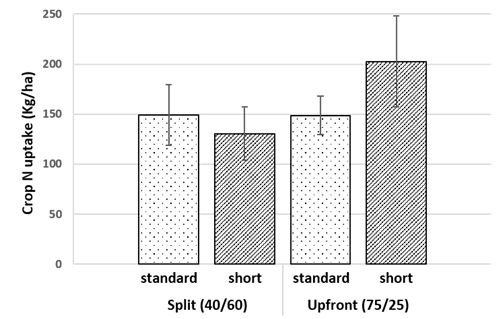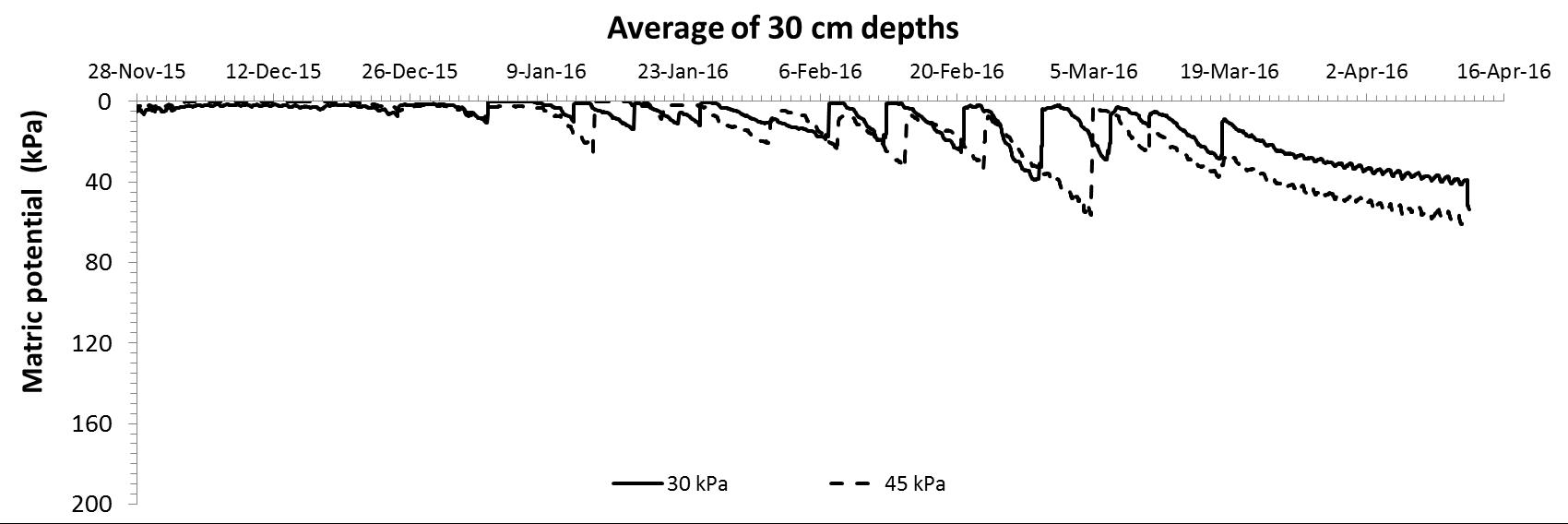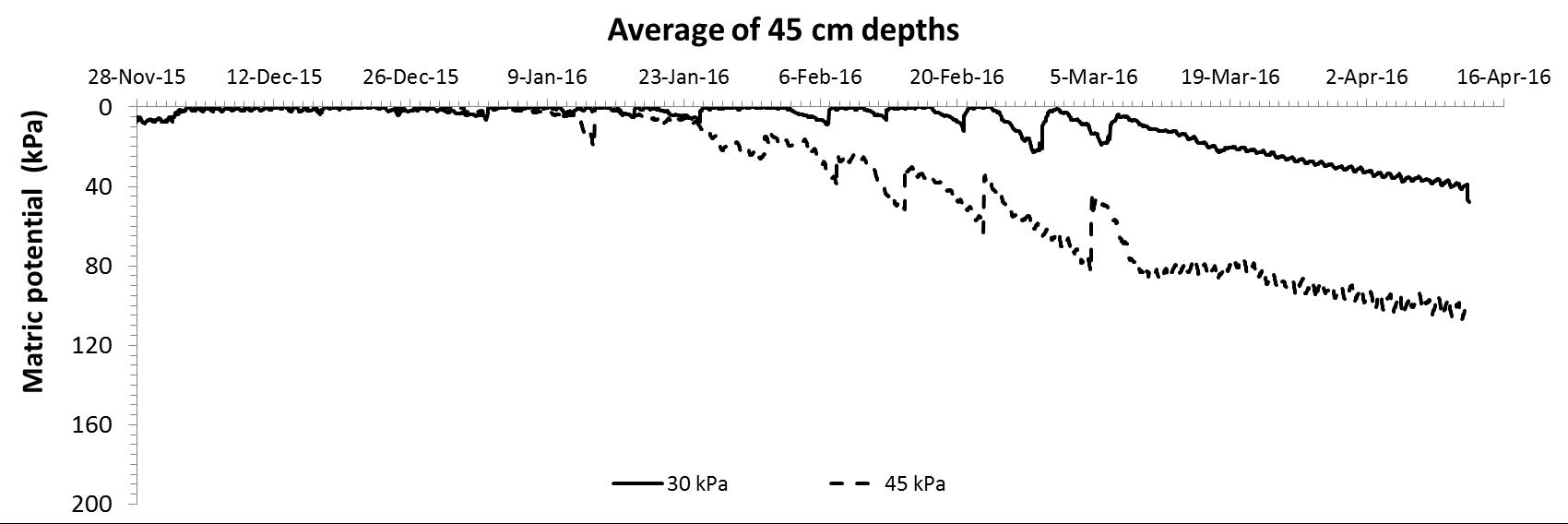The impact of irrigation and nitrogen management on nitrogen uptake and yield in maize
Background
Management of irrigation and nitrogen (N) fertiliser in high input systems such as irrigated maize can have a significant impact on yields. There needs to be a balance to ensure yields are not limited by water and N, as well as to ensure there is not over application contributing to excessive production costs and reduced productivity from these significant resources.
The research is part of the ‘Maximising on-farm irrigation profitability’ project conducted by New South Wales Department of Primary Industries (NSW DPI) and Deakin University, in conjunction with the three regional irrigation grower groups (Irrigated Cropping Council, Southern Growers and Irrigated Research and Extension Committee). Each of the grower groups host field experiment sites for the project and these are key sites for the extension of project findings, as well as organisations such as Local Land Services, CottonInfo and Rice Extension.
With a reduction in water availability in the southern Murray-Darling Basin of around 30 per cent, there is now much greater emphasis on ensuring irrigation growers can optimise production with less water. The overall objective of the project is to develop sustainable broadacre irrigation systems that increase the profitability and flexibility of farming systems in the region.
The project has two components. The first is a water/plant component which aims to assess the impact of varying surface irrigation management strategies (scheduling and frequency) on N use efficiency, water use efficiency and overall system profitability. The second is a hydrology component which aims to develop irrigation design criteria that will allow precise application of water in basin irrigation layouts, such as bankless channel systems, allowing flexibility in management to match recommendations from the agronomy component of the project.
In 2015/16, a field experiment was conducted in a commercial maize crop at Numurkah, in partnership with the Irrigated Cropping Council to investigate the interaction between N and irrigation management.
Methodology
The maize field experiment had two irrigation management and two N management strategies with two replicates per treatment (eight bays in total). Maize (variety Pioneer hybrid P0021) was sown on 25 October 2015 at a plant density of 90,000 plants/ha. The irrigation and N treatments were applied to whole bays within a border-check surface irrigation system. Crop N uptake, at establishment (i.e. 7-leaf stage) and physiological maturity, and grain yield were measured in each bay to determine the effect of the imposed treatments.
The irrigation treatments began at crop establishment after the fourth irrigation and remained until the end of the irrigation season. The two strategies were : i) standard grower irrigation practice (average 45kPa matric potential); and ii) reduced irrigation deficit (average 30kPa matric potential). Matric potential was monitored in each bay by installing two Watermark sensors at 5, 15, 30 and 45cm depth. Average measurements at 15cm were used for scheduling the irrigations.
Nitrogen at the rate of 218kgN/ha, calculated through a N budget for the site, was applied as urea using ‘upfront’ and ‘split’ application strategies. The ‘upfront’ strategy had 75 per cent of the total rate applied prior to planting and the remainder was water-run in-crop during the third irrigation event (16 December). The split strategy had 40 per cent of the total rate applied prior to planting and the remainder was water-run in-crop during the third and fourth (25 December) irrigation events.
Whole plants from 2m of plant row at six locations across each bay were taken at establishment and physiological maturity. The samples were dried, weighed, mulched, ground and analysed for N concentration using Dumas combustion (LECO analyser). Nitrogen uptake was then determined by multiplying the dry matter by the N concentration.
Each bay was harvested with a commercial header with the harvested grain unloaded into a weigh bin before being loaded into a truck for delivery. The total weight taken from each bay was divided by the area of the bay.
Results and discussion
Crop N uptake at establishment, when the irrigation treatments had not yet been imposed, was not influenced by either irrigation or N management strategies with an average crop N uptake of 32kg N/ha. However, at physiological maturity there was a significant effect on crop N uptake from both the irrigation and N management strategies, as well as a significant interaction between the two.
Crop N uptake at physiological maturity increased from 149 to 167kg N/ha (LSD, P=0.06) by reducing the irrigation interval from 45 to 30kPa (average) matric potential. Similarly, crop N uptake increased from 140 to 176kg N/ha (LSD, P<0.001) by applying more N at planting in the ‘upfront’ strategy. Maximum crop N uptake was achieved when more N was applied upfront and the shorter irrigation deficit was used (Figure 1).
Maize grain yield was strongly influenced by poor establishment caused by sowing into very wet conditions following a rain event shortly after planting and pre-irrigation of the field. This meant that three of the eight bays were not harvested as part of the trial, eliminating the second replicate in all but one treatment and precluding any statistical analysis of grain yield. For the bays that were harvested, grain yield was higher with more frequent irrigation (10.1t/ha with 30kPa deficit) than following the standard practice (8.7t/ha with 45kPa deficit). A grain yield of 11.1t/ha was achieved using the ‘upfront’ N management strategy compared to 8.8t/ha with the ‘split’ strategy.

Figure 1: The interaction between irrigation (standard and reduced irrigation deficit) and N (‘split’ and ‘upfront’ management) treatments in maize. The error bars represent the standard deviation.
Our soil moisture monitoring highlighted some issues regarding the suitability of the standard irrigation practice for the soil type at the site. Although only one year’s data, it appears that the reduced irrigation deficit treatment may better suit the soil type at the site. Matric potential measurements at the 30 and 45cm soil depths showed that from the end of January until harvest, the irrigation applications in the standard treatment were not refilling the soil water profile (Figure 2 and Figure 3). Given this result, it is considered more likely that yield was limited in the standard treatment by water stress during the season rather than the reduced irrigation deficit treatment, providing a higher grain yield.

Figure 2: Average matric potential at 30cm depth for the two irrigation treatments. The reduced deficit (30kPa) irrigation treatment is the solid line and the standard irrigation deficit (45kPa) is the dashed line.

Figure 3: Average matric potential at 45cm depth for the two irrigation treatments. The reduced deficit (30kPa) irrigation treatment is the solid line and the standard irrigation deficit (45kPa) is the dashed line.
Conclusion
It is important to note that this is only the first year’s data from a three year trial and that the results from the 2015/16 season were strongly affected by problems at sowing. Despite these problems, the improvement in crop N uptake and grain yield when 75 per cent of the predicted crop fertiliser N requirement was applied upfront compared to when only 40 per cent was applied upfront has provided the project with some confidence to continue investigation in the impact of these N management strategies in irrigated maize production.
The result from the irrigation treatment has highlighted the importance of soil moisture monitoring. Upon first inspection, it appears that crop N uptake and grain yield benefit from a shorter irrigation deficit. However, monitoring of the soil moisture status has shown that the irrigation application in the standard treatment used here was not applying enough water and this resulted in a reduction in crop N uptake and grain yield due to water stress.
During the next season, new tools such as multi-spectral and thermal imagery will also be used to more precisely assess the temporal and spatial variability within bays caused by the irrigation and N treatments applied.
Acknowledgements
The project is supported by funding from the Australian Government Department of Agriculture and Water Resources as part of its Rural R&D for Profit Programme, the Cotton Research and Development Corporation and the Rural Industries Research and Development Corporation.
The contribution of Ray Thornton, Damian Jones, Rob Fisher and Don Griffin in the conduct of the trial is also gratefully acknowledged.
Contact details
John SmithYanco Agricultural Institute, Yanco NSW
0472 060 597
john.smith@dpi.nsw.gov.au
Was this page helpful?
YOUR FEEDBACK
